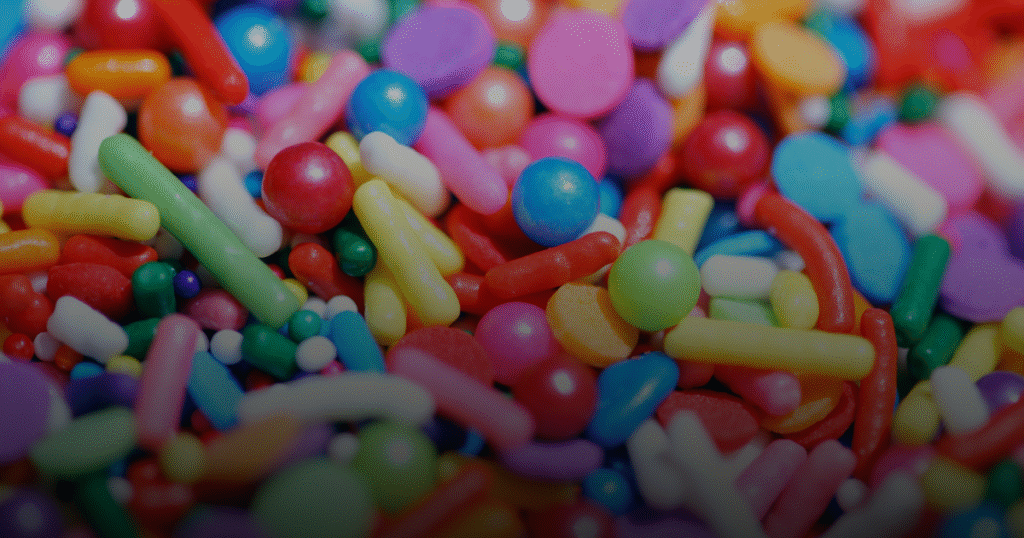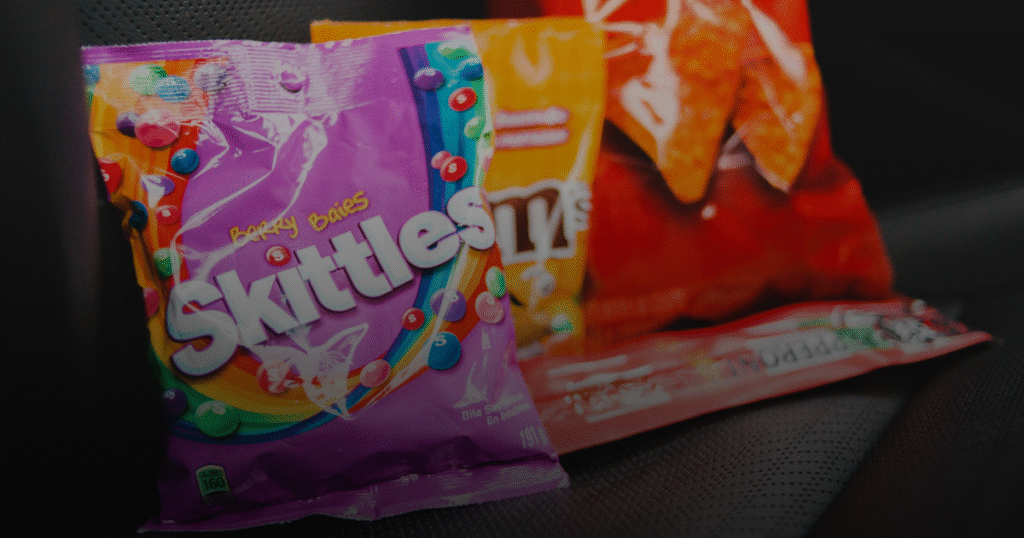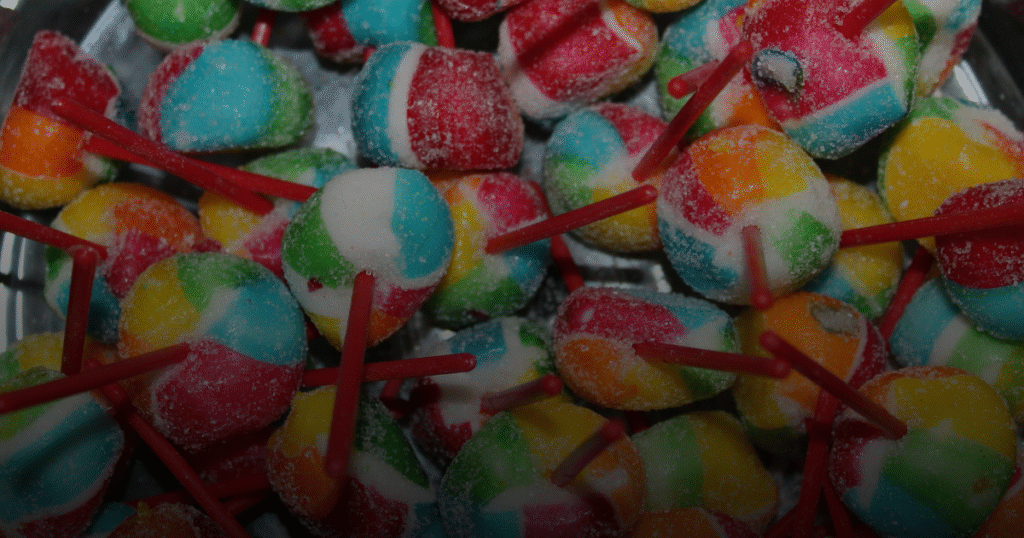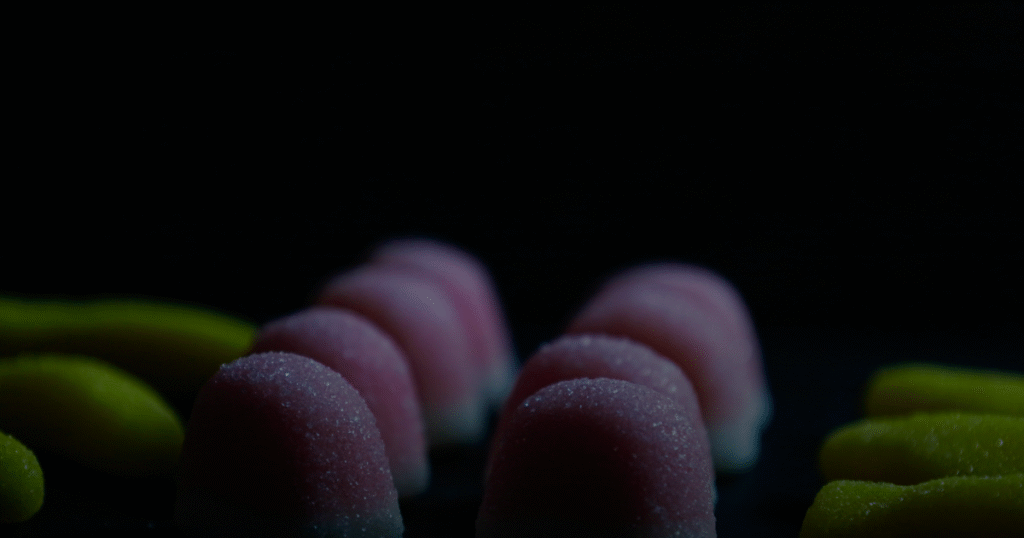Candy tastes sour because it contains special acids like citric acid and malic acid that make your tongue feel tangy. Sour candy is loved by many people all over the world. That tangy, mouth-puckering taste gives a fun and exciting experience. But have you ever wondered what makes candy sour?
In this article, we will explain the secret behind that sour flavor in the simplest words.
The Secret Behind Sour Candy
The main reason candy tastes sour is because of acids in sour candy. These acids create that sharp, tangy flavor on your tongue. When you eat sour candy, your taste buds quickly sense the sourness. It can even make your mouth water or your face twist.

Common Sour Candy Ingredients
There are special ingredients used in making sour candy. Let’s look at them:
- Citric acid in candy
- Malic acid sourness
- Tartaric acid candy flavor
- Fumaric acid sour coating
- Ascorbic acid sour candy
These acids are found in nature, mostly in fruits like lemons, apples, and grapes. But in candy, they are often added in powder form to make the sour flavor stronger.
How Citric Acid in Candy Works
Citric acid is one of the most popular acids used in sour candy. It comes from citrus fruits like lemons, oranges, and limes. When you eat candy with citric acid, it gives a sharp, tangy taste that makes your mouth pucker.
It is often used in sour gummies, hard candies, and sour sprays. This acid is safe to eat in small amounts and adds that famous sour kick to your favorite candies.
The Role of Malic Acid Sourness
Another powerful acid is malic acid. It comes from apples, cherries, and other fruits. In candy, malic acid gives a longer-lasting sourness compared to citric acid.
Many extreme sour candy brands use malic acid to make their candy extra tangy. That strong sour punch you feel when biting into a sour candy is often because of malic acid.
Tartaric Acid Candy Flavor
Tartaric acid is another ingredient that adds to the sour flavor. It comes from grapes and tamarind. This acid gives a dry, sharp sourness, often mixed with other acids to create the perfect balance.
You will find tartaric acid in some chewy candies and sour powders.
You may also like: Andes Candies Are Gluten Free Or Not

What is Fumaric Acid Sour Coating?
Fumaric acid is often used as a sour coating on gummies and other candies. It gives a long-lasting sour taste and is very strong, so only a small amount is needed.
This acid is common in coated sour candies like sour worms or sour belts. It sticks to the outside of the candy and gives that immediate sour blast when you put it in your mouth.
The Use of Ascorbic Acid Sour Candy
Ascorbic acid, also known as Vitamin C, is sometimes added to sour candy. It adds a mild sour taste and boosts the nutritional value of the candy slightly.
Although it is not as strong as other acids, it works well in fruity candies to give a gentle tangy flavor.
The Science of Sour Candy Chemistry
Sour candy is not just about throwing acids onto sweets. There is real sour candy chemistry behind it. Candy makers carefully mix different acids to get the perfect sour taste. They also decide how strong the sourness should be and how long it should last.
If they want a candy that is sour at first and then sweet, they use certain acids on the outside. If they want the sourness to last, they mix acids into the candy itself.
Understanding Sour Sanding Coating
Have you seen a powdery layer on the outside of sour candies? That is called sour sanding coating. It is made from sugar mixed with acids like citric, malic, and fumaric acid.
The sour sanding coating gives the candy that instant sour hit when you pop it in your mouth. After that, the sweetness comes in to balance the flavor.

You may also like: Make Weed Candy
What Are Organic Acids in Candy?
The acids used in sour candies are called organic acids in candy because they come from natural sources like fruits. They are safe to eat in small amounts and are used in many foods, not just candy.
These organic acids make candies tangy, flavorful, and fun to eat.
Sour Candy pH Levels
The sour taste of candy depends on its pH levels. pH measures how acidic or basic something is. The lower the pH, the more acidic, and the more sour the taste.
Most sour candies have a pH between 1.5 to 3. That is very acidic, which is why they taste so sharp. But don’t worry, candy makers make sure it’s safe to eat.
How Do Sour Candy Taste Receptors Work?
Your tongue has special sensors called sour candy taste receptors. These receptors detect the acids in the candy. When the acids touch your tongue, the receptors send a message to your brain saying, “This is sour!”
That is why your face reacts, and you get that exciting, puckering feeling.
The Battle of Sour Candy vs Sweet Balance
Many candies mix both sour and sweet flavors. This sour candy vs sweet balance makes them tasty and fun. First, you get the strong sour kick, then the sweetness takes over to calm your taste buds.
It’s the perfect mix that keeps people coming back for more.
What Are Microencapsulated Acids?
Some candies use microencapsulated acids. This means the acids are covered in tiny layers that protect them until you eat the candy.
When you bite into the candy, the coating breaks, and the sour flavor bursts out. This keeps the candy fresh and gives a strong sour surprise when you least expect it.
Can Sour Candy Burn Your Tongue?
If you eat too much sour candy, you might feel a sour candy tongue burn. This happens because the strong acids can irritate your tongue and mouth.
It’s not dangerous, but it can be uncomfortable. Your tongue might feel rough or sensitive for a little while. So, it’s better to enjoy sour candy in moderation.

The Famous Sour Candy Mouth-Puckering Effect
The most fun part of eating sour candy is the sour candy mouth-puckering effect. When your face tightens, and your eyes squint, that’s because of the acids working on your taste buds.
Many people love this feeling because it makes eating candy more exciting.
Are There Sour Candy Health Effects?
Eating sour candy once in a while is fine. But eating too much can have some sour candy health effects like:
- Tooth enamel damage due to strong acids
- Tongue irritation or burning
- Stomach discomfort if eaten in large amounts
That’s why it’s important to enjoy sour candies as a treat, not as a daily snack.
The Popular Sour Coating on Gummies
Gummy candies like sour worms and sour bears often have a special sour coating on gummies. This coating is made from sugar and acids like citric and fumaric acid.
It gives gummies that first strong sour taste, followed by the chewy sweetness inside.
Exploring Extreme Sour Candy
Some candies take sourness to a whole new level. These are called extreme sour candy. They use extra amounts of acids like malic acid and fumaric acid to make the candy super tangy.
Popular extreme sour candies include:
- Warheads
- Toxic Waste
- Sour Patch Kids Extreme

Conclusion
Sour candy is fun and exciting because of the special acids that give it a sharp, tangy taste. Ingredients like citric acid, malic acid, and others work together to create that mouth-puckering feeling we all love. But it’s always best to enjoy sour candy in small amounts to keep your mouth and teeth safe.
FAQs: What Makes Candy Sour
Q1: What makes candy sour?
Ans: Candy tastes sour because of special acids like citric acid, malic acid, and tartaric acid. These acids create a sharp, tangy flavor.
Q2: Is sour candy safe to eat?
Ans: Yes, sour candy is safe if eaten in small amounts. Eating too much can hurt your tongue or teeth.
Q3: Why does sour candy burn my tongue?
Ans: The strong acids in sour candy can irritate your tongue. This can cause a burning or rough feeling if you eat too much.
Q4: What is the sour coating on gummies?
Ans: The sour coating is a mix of sugar and acids like citric or fumaric acid. It gives gummies a quick, tangy taste.
Q5: Which candies are the most sour?
Ans: Candies like Warheads, Toxic Waste, and Sour Patch Kids Extreme are known for being super sour and mouth-puckering.




